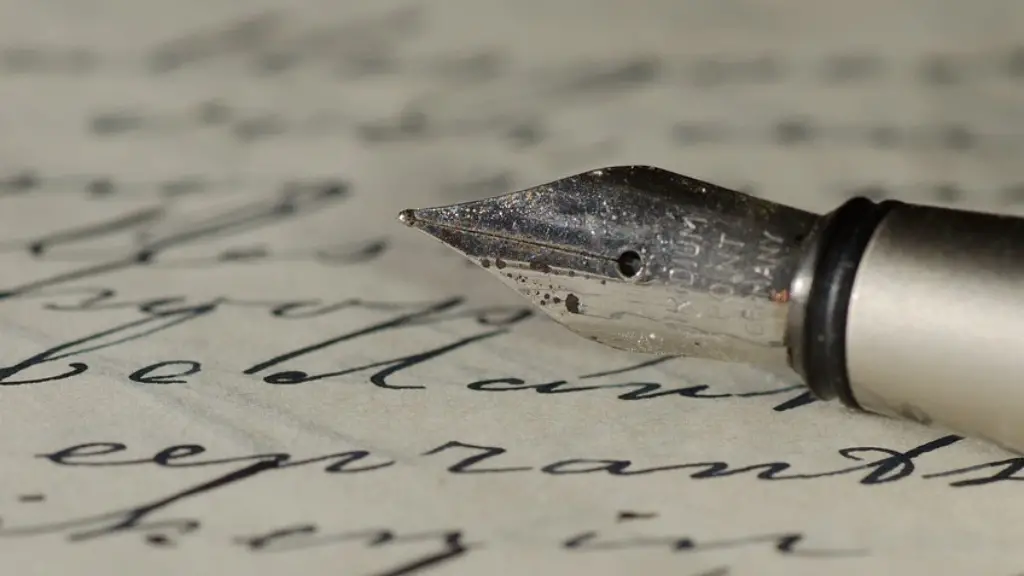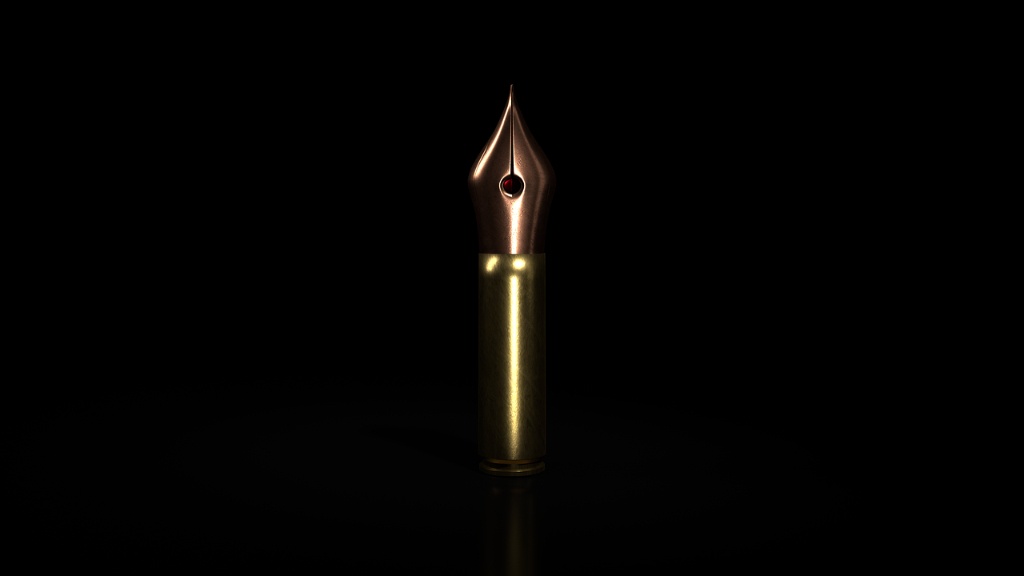What is Poetry?
Poetry is a form of literary expression that is both timeless and beloved. It has been around since ancient times, and has many forms which readers have come to appreciate and enjoy. Poetry is its own special form of language, providing beauty, emotion, and meaning to words that otherwise might have little impact. Its appeal lies in its concise and often poignant or passionate delivery, allowing readers to glimpse deep into the human experience.
Poetry is often identified as a type of “creative writing” due to its heavy reliance on metaphor, imagery, and figurative language. The goal of most poetry is not to necessarily tell a story, but rather to encourage an emotional or thought-provoking response. Words are arranged in clever, new ways and the juxtaposition of ideas often allows the reader to draw new meaning and insight.
Beyond the written text, one of the defining qualities of a poem is its rhythmic pattern. The use of rhyme and meter is important in providing distinctive structure, while simultaneously guiding the reader’s journey. Poetry can be read aloud and offers the opportunity to layer in musical elements—such as pauses, intonation, and repetition.
A Brief History of Poetry
The earliest known poem is the 3,000-year-old “Epic of Gilgamesh.” Entertaining and enlightening, it is a Mesopotamian heroic epic tale filled with adventure and mythology. Although it is not a perfect example of modern poetry, it does contain many of the structures and techniques previously mentioned.
During the medieval and Middle Age periods, European poetry flourished. Many of the classics such as “Beowulf” and “Canterbury Tales” were composed, filled with grand stories and epic prose. Poets of this era typically wrote in the “poetic meter” of their day, a standard tool used to string together words and ideas.
As poetic forms began to modernize so did audience tastes, and during the Victorian era poets like Emily Dickinson, W.B. Yeats, and Lord Alfred Tennyson wrote in a way that pushed the envelope. They wrote in what is now known as “free verse” which disregards traditional conventions and offers much more in terms of rhythm and expression.
Understanding Metaphors, Imagery, and Figures of Speech
One of the basic foundations of poetry is the use of metaphor, imagery, and figures of speech. These tools are used to convey meaning and emotion, allowing for deeper understanding of the poem’s subject. Metaphors compare two different things, such as “the moon is a white saucer” as a way of describing its shape and light. Imagery contains descriptive language that creates mental images in the reader’s mind and helps bring the poem to life. Figures of speech include similes, hyperboles, and allusions—each providing their own unique flavor and significance.
Common Types of Poetry
The types of poetry are many and come in a variety of styles. Traditional poetic forms often include rhyme and meter and follow predetermined formats. Popular traditional forms include sonnets, odes, and haiku. Free verse poems, on the other hand, are less restricted and offer more freedom and creativity. Other types of poetry such as spoken word, streams of consciousness, and concrete poetry are less traditional and more experimental.
How to Write a Poem
Learning how to write a poem can be a daunting task. It requires a great deal of creativity, but also a deep understanding of language, form, and emotions. Most importantly, one needs to begin with an idea and the willingness to express it in words.
Some helpful pointers when writing a poem include: identify the purpose or theme; use imagery and figures of speech to enhance the description; consider the rhythm and meter, understanding when to use sound devices; edit, edit, edit, and finally share it.
The Power of Poetry
Above all, the power of poetry lies in its emotional power. It encourages one to dig deeper, think harder, and be creative with words. A poem can captivate its readers with a single line, conjure a memory, or inspire a thought. Whether it be read aloud or in the privacy of one’s mind, the ability of poetry to capture the essence of something bigger and deeply felt is what makes it so remarkable.
Exploring Types and Styles of Poetry
Form poetry is the traditional interpretations of classic poetic form. These are typically strict in both form and structure and the poet needs to adhere to a predetermined format. It includes ode, sonnet, haiku, and villanelle. Meter is a fundamental requirement in form poetry, as its use gives a sense of rhythm promoting a subtle emphasis on certain words. Examples of traditional poetic meters are iambic pentameter, trochee, and dactyl.
Free verse poetry is more open-ended when it comes to form and structure. It goes back to William Wordsworth of the romantic period. While the rhyme can still exist, it is often the imagery and figurative language that brings the verse to life. Language here is used more expressively and almost ‘stream of consciousness’ in approach. Although using a predetermined structure is not required in free verse, a bit of organization helps in maintaining focus and clarity.
Spoken Word Poetry
Spoken word is a modern form of poetry that became popular in the late 90s. It is highly expressive and encourages writers to be very poetic, yet straightforward. It is usually created with a combination of lyrical prose, rhythm, and volume to deliver the poem with impact and feeling. Spoken word can also contain elements of theater and incorporates the added use of gestures and facial expressions.
Writing as a Creative Outlet
Writing poetry is a great way to express creativity, as well as a powerful form of self-expression. It is an excellent outlet for feelings, stress, and traumas, and can also serve as a powerful motivator during difficult times. Poetry has a unique ability to convey experiences and emotions in ways that words alone cannot, opening up a creative window for readers to explore and even inspire. This can help build confidence, develop resilience, and cultivate an understanding that one’s words are worthy and valuable.


